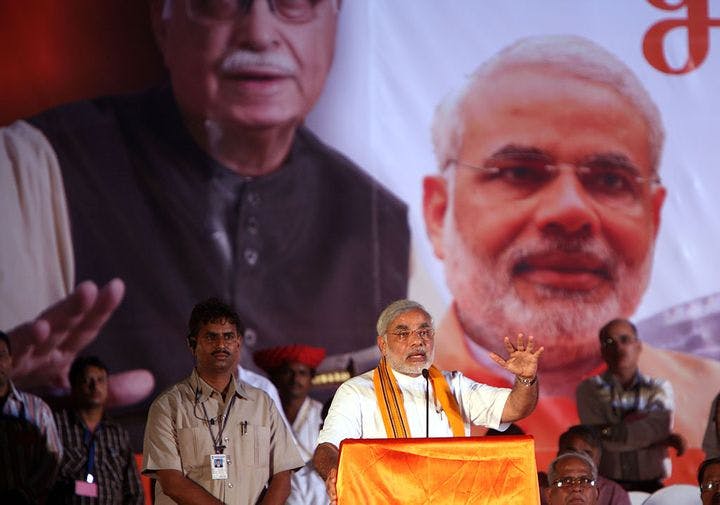Fall 2013
India’s can-do autocrats
– The Wilson Quarterly
Don’t look to New Delhi for solutions to India’s woes.
In the early 1990s, Indian finance minister Manmohan Singh championed a host of reforms that started his country on a 20-year streak of economic growth. But when Singh became prime minister in 2004, he seemed to leave his reformist magic behind. India, which once promised to challenge China as the developing world’s most dynamic economy, has faltered badly and now threatens to sink back into its old role as a chronic economic underperformer.
Not to worry, writes Ruchir Sharma, a Wall Street emerging markets specialist and author of Breakout Nations: In Pursuit of the Next Economic Miracles (2012). The secret to India’s revival lies far from New Delhi, in the nation’s 28 state capitals.
As late as the mid-1990s, state governments were fragile and largely ineffective, weighed down by a politics based on caste-based coalitions and religion. But a new generation of leaders realized they could do better by appealing to voters’ rising economic aspirations. Empowered by Singh’s reform of the interventionist “license raj” that had long stifled business, a half-dozen chief ministers have built especially impressive track records since the mid-’90s.
In Ahmadabad, capital of the state of Gujarat, for example, “the sun sets red,” thanks to rapid industrial development that is occurring under Chief Minister Narendra Modi. The pace matches what has often been seen in southern China. Modi has also used his popularity to institute painful reforms, cutting state subsidies and raising electricity rates. In the poverty-stricken state of Bihar, meanwhile, Nitish Kumar began his career catering to his own small Kurmi caste, but after becoming chief minister in 2005 he pursued a broad agenda, cracking down on the state’s notorious crime and corruption and building “one of the fastest-growing state economies in India.”
India “is rediscovering its natural fabric as a nation of strong regions,” Sharma writes. It is a huge place, better thought of as a continent than a country. It is not even united by language: Only 40 percent of Indians speak some form of Hindi, the nation’s leading language. Bihar and Gujarat “are as different as Germany and Greece.” Yet the past decade of change has reshaped the landscape of wealth, allowing the poorer inland and northern states to close some of the gap with the richer ones on the coast.
The regional political parties and the relatively young national Bharatiya Janata Party (BJP), a Hindu nationalist party, have gained ground at the expense of the long-dominant Congress party. Congress now controls only two of the nation’s 10 largest states, and this loss of sway has weakened the party’s authority in New Delhi. Its aging, “genteel Brahmans ... have never been comfortable promoting what they see as crass commerce.”
But it’s an open question whether any of the state leaders can step up to the top spot in New Delhi. Their political styles and coalitions are tailored to the peculiarities of their home turfs. And they have a pronounced authoritarian streak — Sharma calls them “can-do autocrats.” Modi, for example, has been criticized as a Hindu chauvinist and accused of failing to intervene to stop anti-Muslim riots in 2002 that left more than 1,000 Muslims dead in Gujarat.
He was nevertheless named the BJP’s candidate for prime minister in elections slated for next May, after Sharma’s article was published. The betting now is that the Congress party will lose, perhaps to be replaced by a coalition government.
Sharma argues that India should abandon its unworkable ideal of a strong central government and adopt German-style federalism. There are scattered signs that it is moving in that direction. Recently, for example, the fraught decision about whether to allow big retailers such as Walmart to open stores in India was bumped down from New Delhi to the state level. For all their flaws, Sharma says, the regional parties “represent hope: They are young, energetic, focused on economic development, and very much in sync with the practical aspirations of the youthful majority.”
THE SOURCE: “The Rise of the Rest of India: How States Have Become the Engines of Growth” by Ruchir Sharma. Foreign Affairs, Sept.–Oct. 2013.
Photo courtesy of Wikimedia Commons
